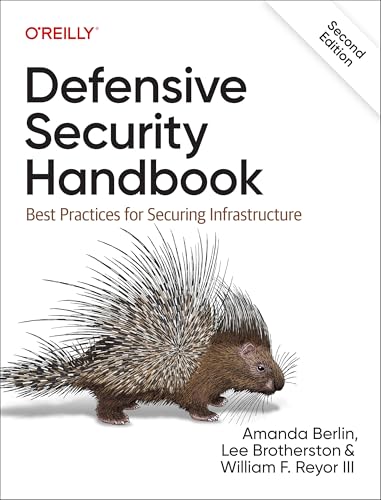
The security of electronic devices goes far beyond robust software—it also involves physical protection against attacks and ensuring that systems can withstand tampering attempts. In this article, we explore the concepts of physical tamper resistance and how to measure a device’s security, while offering tips to build more reliable and secure systems.
What is Physical Tamper Resistance?
Physical tamper resistance measures how difficult it is for an attacker to breach a system, considering three essential factors:
- Time: The duration required to successfully execute an attack.
- Cost: The financial resources the attacker must invest.
- Expertise: The level of specialization and access to specific equipment needed.
In essence, the more time, money, and expertise required to compromise a system, the higher its resistance to physical attacks.
Classification of Physical Security Levels
Devices can be classified into different security levels—from the weakest to the most robust. Although some scales consider up to six levels, let’s focus on a practical approach based on the following categories:
Level Zero: No Protection
- Characteristics:
- There are no security mechanisms in place.
- All components are accessible and exposed.
- Attack:
- An attacker can compromise the device in minutes or a few hours without sophisticated equipment.
- Examples:
- Microcontrollers and FPGA chips with external memory.
Low Level: Basic Protection
- Characteristics:
- Implements some basic security features, though in a very rudimentary way.
- Often involves microcontrollers with internal memory and proprietary programming algorithms.
- Attack:
- An attacker will need simple tools and some technical knowledge, and breaking the security may take from a few hours to days.
- Note:
- In the early 1990s, the necessary equipment cost around US$1,000; today, that cost can be significantly lower—around US$500 or even less.
Moderately Low Level: Protection Against Low-Cost Attacks
- Characteristics:
- Systems incorporate measures designed specifically to counter low-cost attack methods.
- Attack:
- Requires the use of slightly more advanced equipment, and the time needed to compromise these systems can extend to several months.
Advanced Levels: Protection for Critical Applications
- Characteristics:
- Devices such as military chips, banking systems, and complex ASICs or FPGAs require protection against all known types of attacks.
- Attack:
- It is virtually impossible for an individual attacker to breach these systems without developing new methods or tools.
- Important:
- As equipment becomes more affordable over time, systems once considered secure may eventually become vulnerable. Thus, the classification of security levels is both relative and dynamic.
Standards and Certifications in Cryptographic Module Security
Beyond the physical tamper resistance of devices, cryptographic modules follow specific standards to ensure their integrity and reliability. Among the guidelines published by the U.S. Department of Commerce, notable levels include:
- Level One:
- Defines the basic security requirements.
- Level Two:
- Adds physical mechanisms such as coatings, seals, or locks.
- Level Three:
- Requires advanced physical protection to prevent access to critical parameters.
- Level Four:
- Considered the highest standard, designed to withstand any kind of physical attack.
Lessons Learned from Security Failures
Various real-world cases highlight the importance of robust design and continuous security evaluation. Notable issues over the years include:
- Microcontroller Fuse Protection Flaws:
- Some microcontrollers had a security fuse that could be reset without erasing data or code, compromising the device’s integrity.
- Information Leaks in Smartcards:
- In one case involving Hitachi products, the accidental inclusion of a complete datasheet on a CD demonstrated how negligence can lead to vulnerabilities.
- Bugs in FPGA and CPLD Chips:
- Software errors in devices from manufacturers like Actel and Xilinx underscored the need for continuous updates to maintain security.
- Secure Memory Initialization Issues:
- In devices such as the Dallas SHA-1 secure memory, a factory initialization error led to inadequate activation of protection mechanisms, resulting in recalls and security revisions.
How to Build a Secure System
Embrace a Holistic Approach
Security should not be an afterthought added post-development—it must be integrated from the very beginning. This means:
- Strategic Planning:
- Understand who the potential attackers are, what motivates them, and what tools and techniques they might employ.
- Threat Assessment:
- Conduct a detailed analysis of the system’s weak points and potential vulnerabilities.
- Secure Design:
- Incorporate security measures at every stage of development, avoiding quick fixes that might compromise the system in the long run.
Consider Cost-Benefit Balance
An important principle is ensuring that the cost for an attacker to breach the system exceeds the benefits they could gain. This implies:
- Investing in Security:
- Although low-cost technologies may be available, opting for more robust solutions can prevent future losses.
- Maintenance and Updates:
- Keep up with technological advancements and regularly update your security mechanisms to counter new threats.
Choose Reliable Suppliers
Even though many products on the market are marketed as “certified” or “secure,” it is crucial to:
- Evaluate Supplier Reputation:
- Be cautious of security claims that lack transparent testing and certification.
- Conduct Independent Testing:
- Whenever possible, subject components to rigorous assessments before integrating them into your system.
Conclusion
Building a secure system requires a meticulous and integrated approach that considers both physical and logical security. By understanding the various levels of tamper resistance and the challenges posed by increasingly sophisticated attacks, you can develop solutions that truly protect data and ensure device reliability. Remember, security is not a static state but an ongoing process that must evolve alongside technological advancements and emerging threats.
Invest time in planning, choose trustworthy suppliers, and stay updated—the security of your system and the trust of your users depend on it.





